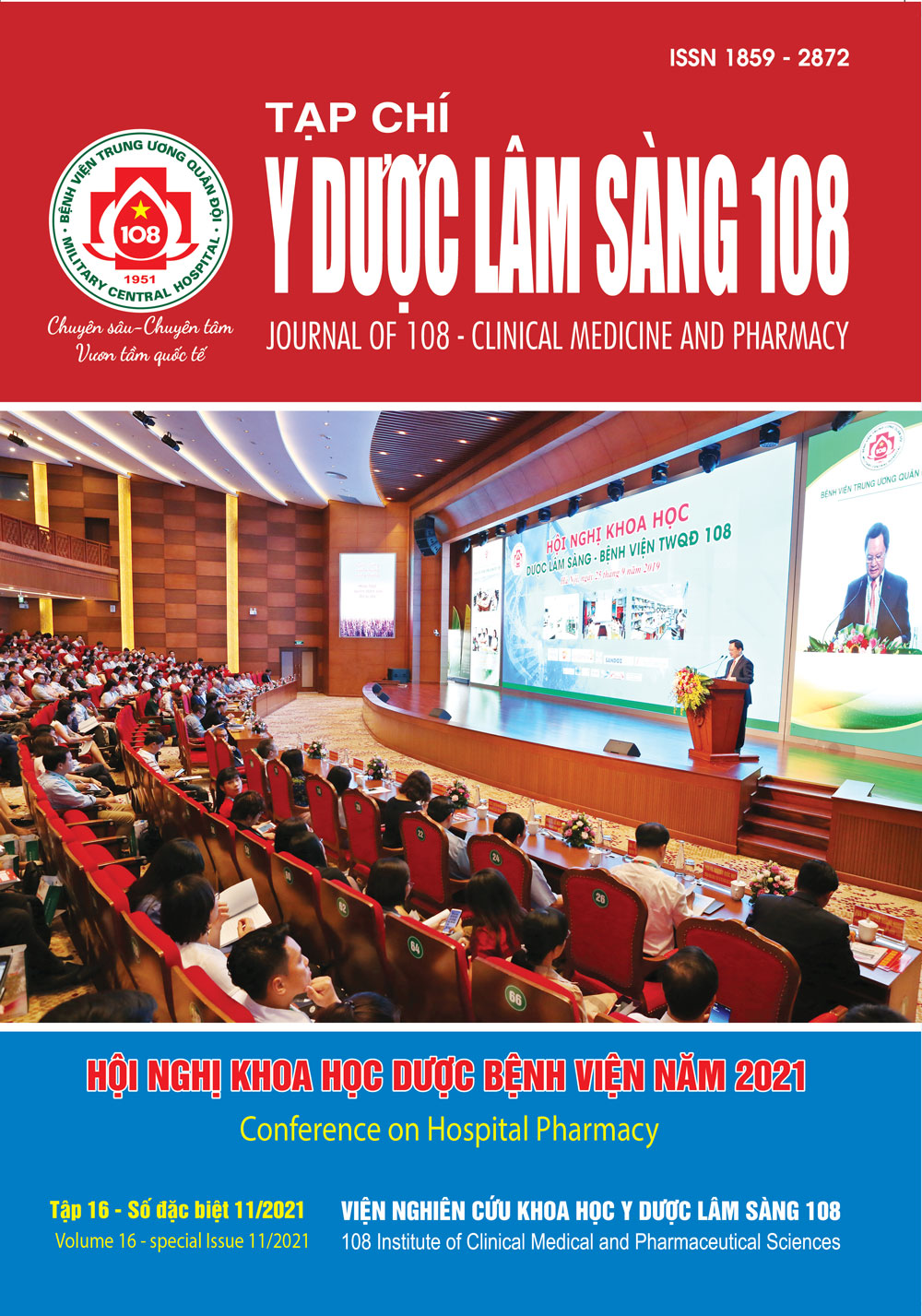Survey on the use of analgesic medicines in outpatients with cancer at the Department of Pain and Palliative care - 108 Military Central Hospital
Main Article Content
Keywords
Abstract
Data from several low-income countries shows that approximately 80% of patients who die from cancer experience moderate or severe pain which lasts an average of 90 days. Therefore, research on pain and efficacy of analgesics is needed to improve the quality of life for cancer patients, especially for outpatients with cancer because of difficulty in monitoring the outcome of management of cancer pain. Objective: To investigate the use of analgesics in outpatient with cancer. Subject and method: A retrospective study on 219 outpatients’ medical records had prescriptions containing at least one analgesic at Department of Pain and Palliative care from April, 2020 to April, 2021. Result: Pain relievers were prescribed quite diverse including non-opioid medication, weak opioids, and strong opioids. Ibuprofen was the most commonly prescribed (52.5%) and was ordered to more than half of the outpatients (55.3%), codeine was the second most commonly prescribed medication (48.9%). The most common type of drug combination was weak opioid+non-opioid analgesia (46.6%). The dose of analgesics were in range of recommended doses. Conclusion: There was variety of analgesics for cancer pain management for outpatient in 108 Military Central Hospital. The combination of two analgesics are the most common. The doses were recommended but the dosing intervals were needed to be reviewed.
Article Details
References
2. Reyes-Gibby CC, Ba Duc N et al (2006) Status of cancer pain in Hanoi, Vietnam: A hospital-wide survey in a tertiary cancer treatment center. J Pain Symptom Manage 31(5): 431-439.
3. Pergolizzi JV, Gharibo C et al (2015) Treatment considerations for cancer pain: A global perspective. Pain Pract 15(8): 778-792.
4. Raphael J, Hester J et al (2010) Cancer pain: Part 2: Physical, interventional and complimentary therapies, management in the community, acute, treatment-related and complex cancer pain: A perspective from the british pain society endorsed by the UK association of palliative medicine and the royal college of general practitioners. Pain Med 11(6): 872-896.
5. Kim YC, Ahn JS et al (2015) Current practices in cancer pain management in Asia: A survey of patients and physicians across 10 countries. Cancer Med 4(8): 1196-1204.
6. World Health Organization (2018) WHO guidelines for the pharmacological and radiotherapeutic management of cancer pain in adults and adolescent. World Health Organization, Geneva: 1-40.
7. Bộ Y Tế (2006) Hướng dẫn chăm sóc giảm nhẹ đối với người bệnh ung thư và AIDS. Nhà xuất bản Y học, tr. 1-40.
8. Swarm RA, Paice JA et al (2020) Adult cancer pain, Version 1.2020, NCCN clinical practice guidelines in oncology. J Natl Compr Canc Netw: 977-1007
9. Neufeld NJ, Elnahal SM et al (2017) Cancer pain: A review of epidemiology, clinical quality and value impact. Future Oncol 13(9): 833-841.
10. Rau KM, Chen JS et al (2015) The impact of pain control on physical and psychiatric functions of cancer patients: A nation-wide survey in Taiwan. Jpn J Clin Oncol 45(11): 1042-1049.
11. Lin J, Hsieh RK et al (2020) Satisfaction with pain management and impact of pain on quality of life in cancer patients. Asia Pac J Clin Oncol 16(2): 91-98.
12. Te Boveldt N, Vernooij-Dassen M et al (2013) Pain and its interference with daily activities in medical oncology outpatients. Pain Physician 16(4): 379-389.
13. Miaskowski C, Dodd MJ et al (2001) Lack of adherence with the analgesic regimen: A significant barrier to effective cancer pain management. J Clin Oncol 19(23): 4275-4279.
14. Rosa William E, Riegel Barbara et al (2021) The association between analgesic treatment beliefs and electronically monitored adherence for cancer pain. Oncology nursing forum 48(1): 45-58.
15. Valeberg BT, Miaskowski C et al (2008) Prevalence rates for and predictors of self-reported adherence of oncology outpatients with analgesic medications. Clin J Pain 24(7): 627-366.
 ISSN: 1859 - 2872
ISSN: 1859 - 2872
